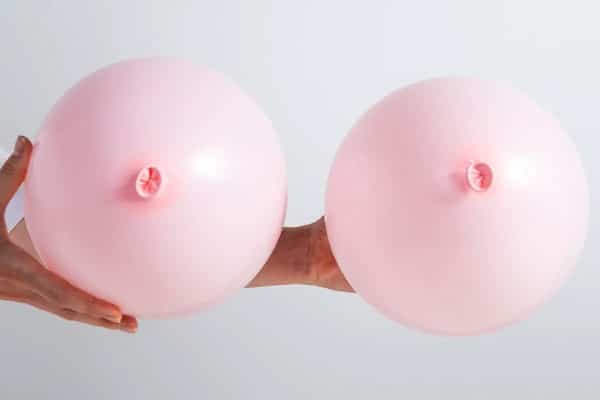
12 Jul Types of Breast Implant Incisions
Which Breast Implant Incision Is Right for You
Breast Augmentation, a term you’ve likely heard quite often, is a surgical procedure aimed at enlarging the size and shape of a woman’s breasts. This procedure has seen significant advancements over the years, with various techniques and incision options now available. This blog will discuss various incision options for breast implants, their pros and cons, and what to expect in terms of scarring after Breast Augmentation.
Perth Specialist Plastic Surgeon Dr. Guy Watts regularly performs Breast Augmentation procedures, as well as other breast and body contouring surgery.
What Are The Different Incision Options?
Breast Augmentation is more than just a cosmetic procedure and like any surgical procedure, it has risks and complications. That’s why choosing the right incision option becomes an essential part of the process. The incision type can influence the surgery’s outcome, including the appearance of scars and the potential for breastfeeding in the future.
Incision Differences
When it comes to Breast Augmentation, there are three main incision options: under the breast (Inframammary), around the areola (Periareolar), and in the armpit (Transaxillary). Each of these incision options has its advantages and drawbacks, depending on various factors like your anatomy, the type of implants you choose, and your personal preferences.
The choice between these incision options is usually a collaborative decision between you and Dr. Watts. It’s essential to understand each of these options and discuss them with Dr. Watts to ensure the best possible outcome.
Under the Breast (Inframammary Incision) Technique
The inframammary Incision is one of the most common techniques for Breast Augmentation. This incision is made in the crease where the breast meets the chest wall, hence the term ‘under the breast.’ Dr. Watts creates a pocket for the implant either above or below the chest muscle through this incision.
The primary advantage of this incision type is that it allows for a direct route to the implant pocket, giving Dr. Watts excellent visibility and control during the procedure. This direct access is particularly beneficial when placing larger implants or when performing complex procedures.
But the inframammary incision is not without its potential drawbacks. Despite being hidden in the breast crease, the scar can sometimes be visible when you’re lying down or when you raise your arms.
Pros and Cons of Inframammary Incision
Every incision has its pros and cons, and the inframammary incision is no exception. On the positive side, this incision offers direct access to the implant pocket, providing Dr. Watts with excellent visibility during the procedure. This visibility can result in more precise implant placement, potentially resulting in a better cosmetic outcome.
On the downside, as mentioned earlier, the inframammary incision can leave a visible scar in the breast crease. Keep in mind that the visibility of this scar can vary depending on your healing process and how well you follow post-operative care instructions.
Around the Areola (Periareolar Incision) Technique
The periareolar incision technique involves making an incision along the border of the areola, (the darker skin surrounding the nipple). This incision can be used when a Breast Lift is being performed in conjunction with an Augmentation. The primary advantage of this incision is that the resulting scar blends in with the transition between the darker and lighter skin, making it less noticeable.
The periareolar incision also has potential drawbacks. It can potentially affect nipple sensation and breastfeeding capability. Also, it may not be suitable for larger implants due to limited access.
Pros and Cons of Periareolar Incision
The periareolar incision offers the benefit of a less noticeable scar, as it’s hidden in the transition between the darker and lighter skin of the areola. This incision also provides direct access to the breast tissue, allowing for precise implant placement.
But there are disadvantages too. There’s a risk of reduced nipple sensation due to the proximity to the nerves that supply the nipple. Also, this incision may not be suitable for larger implants due to its limited size.
In the Armpit (Transaxillary Incision) Technique
The transaxillary incision technique involves making an incision in the armpit, through which Dr. Watts creates a tunnel to the breast. The implant is then inserted through this tunnel and placed in the pocket created either above or below the chest muscle.
The primary advantage of this technique is that there’s no scar on the breast itself, as the incision is hidden in the natural folds of the armpit. Keep in mind that the transaxillary incision doesn’t offer as much visibility and control as the other options, and there may be a higher risk of implant misplacement.
Pros and Cons of Transaxillary Incision
The transaxillary incision’s main advantage is the absence of a scar on the breast itself, which many women find appealing. This incision can be used for both saline and silicone implants.
The drawback is that it doesn’t offer the same level of visibility and control as the other incision options, potentially leading to less precise implant placement. There’s also a higher risk of implant misplacement compared to the other techniques.
What to Expect: Scars after Breast Augmentation
Regardless of the incision technique you choose, scarring is a part of the healing process following Breast Augmentation. The appearance of these scars can vary widely depending on factors like your body’s healing response, the surgical technique used, and how well you follow post-operative care instructions.
In the beginning of the recovery period, scars may appear red and raised, but they generally fade and flatten over time, becoming less noticeable.
Factors to Consider When Choosing the Breast Implant Incision
- Desired Outcome: Different incision types may have varying effects on the final appearance of your breasts
- Scarring Concerns: The location and visibility of the resulting scars can vary depending on the incision type. If minimising visible scarring is a priority for you, discussing scar placement and visibility with Dr. Watts is crucial
- Anatomical Factors: Anatomical factors, including breast size, shape, and nipple placement, can influence the choice of incision type.
- Revision Surgery Considerations: Some incision types, such as the inframammary incision, offer greater access for revision procedures if necessary. On the other hand, incision types like the transaxillary may present additional challenges for future revisions
- Surgeon’s Recommendation: Your plastic surgeon’s recommendation is invaluable when choosing the right incision type. They have extensive experience and knowledge in the field and can provide expert advice based on your specific circumstances. They will consider factors such as your anatomy, implant type, and desired outcome to guide you towards the most appropriate incision type for your Breast Augmentation procedure
Choosing the Right Breast Implant Incision for You
Choosing the right incision option for your Breast Augmentation surgery is a personal decision that should be made in consultation with Dr. Watts. It’s important to consider factors like your body type, the size and type of implants you’re considering, your lifestyle, and your personal preferences.
Remember that each incision option comes with its unique set of pros and cons. Therefore, it’s crucial to weigh these factors carefully and ask Dr. Watts plenty of questions to ensure you make a decision that aligns with your goals and expectations.
When considering this procedure, understanding the different incision options is crucial. Whether you opt for the inframammary, periareolar, or transaxillary incision, each comes with its unique set of advantages and potential drawbacks.
Remember, the right choice for you depends on various factors, including your anatomy, implant type, and personal preferences. Therefore, it’s essential to have a thorough discussion with Dr. Watts to ensure you make an informed decision.
FAQs about Breast Implant Incisions
What are the different types of incisions used in Breast Augmentation?
- There are three main types of incisions used in Breast Augmentation;
- Inframammary (under the breast)
- Periareolar (around the areola)
- Transaxillary (in the armpit).
- The choice of incision depends on several factors, including the patient’s anatomy, the type and size of the implant, and the patient’s personal preferences.
How does the type of incision affect the placement of the breast implant?
- The type of incision can influence the placement of the breast implant, which is typically either over the muscle (subglandular placement) or under the muscle (submuscular placement).
- Inframammary and periareolar incisions provide direct access to the breast tissue and the chest muscle, making them suitable for both types of implant placements.
- The transaxillary incision, (made in the armpit), also allows for both placements but requires more technical skill from the surgeon due to the distance from the incision to the breast.
Will the incision type affect the visibility of scars after Breast Augmentation?
- Yes, the type of incision can affect the visibility of scars.
- Inframamary incisions can be more visible as they are located under the breast, but they can be hidden under the breast fold.
- Periareolar incisions are made around the areola and can be less visible due to the transition from the dark skin of the areola.
- Transaxillary incisions are made in the armpit and are usually the least visible as they are away from the breast.
Can the type of incision affect sensation in the breast or nipple?
- Generally, most women do not experience a permanent change in nipple or breast sensation after Breast Augmentation. However, there can be temporary changes in sensation.
- The periareolar incision carries a slightly higher risk of nipple sensation changes, but this is usually temporary and improves over time.
Can the same incision be used if I need to replace my implants in the future?
- Yes, in many cases, the same incision can be used for implant replacement or revision. This is particularly true for the inframammary incision, which can be reopened if you ever need to remove, replace, or revise your implants.
- The feasibility of using the same incision for future surgeries also depends on the specific circumstances and the surgeon’s assessment.
Further Reading about Breast Implants Procedures with Dr. Watts
- Read Dr. Watts’ Breast Augmentation Surgery Page
- Read Dr. Watts’ Breast Reduction Surgery Page
- Read Dr. Watts’ Breast Lift Surgery Page
- Read Dr. Watts’ Blog about What causes Breast Ptosis (sagging) – Causes and Surgery for Breast Ptosis
Medical References about Breast Implant Incisions Types
- What You Need to Know About Breast Augmentation – Medical News Today
- Breast Implants: Types, Surgery, Recovery & Risks – Cleveland Clinic
- Decisional Pathways in Breast Augmentation – NCBI
- Breast Augmentation Incision Sites – Mayo Clinic
Dr. Guy Watts – Specialist Plastic Surgeon In Perth WA
Dr. Guy Watts (AHPRA Medical Reg. MED0001539378) is a Specialist Plastic Surgeon with an extensive career that spans across renowned plastic surgery clinics worldwide. His exceptional expertise has been honed through invaluable experiences at esteemed establishments such as the prestigious New York Eye and Ear Infirmary and the renowned Pitanguy Clinic in Brazil.
Having collaborated with the foremost cosmetic plastic surgeons on a global scale, Dr. Watts has chosen to return to Perth after a remarkable 17-year journey of intensive training and invaluable professional experience to bring the latest practices and technology in cosmetic plastic surgery to his patients.
Dr. Watts is a Fellow of the Royal College of Surgeons (FRACS) and a Member of the Australian Society of Plastic Surgeons (ASPS), Australasian Society of Aesthetic Plastic Surgeons (ASAPS) and the International Society of Aesthetic Plastic Surgeons (ISAPS).








